What do you think?
Rate this book
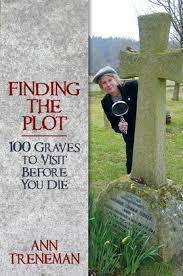

Unknown Binding
First published September 26, 2013
They couldn't be too depressing or upsetting. I put very few recent graves on my list and I thought long and hard about those I did. For instance, I figure that Philip Gould, the political strategist who died in 2011 and wrote a book about his experience of dying, would actually want to be on the list. I was also wary of murder victims, This is a book about lives, not deaths. — Ann Treneman
This is another book I'm reading due to my current interest in graves and memorials for a university assignment. I'm so pleased I chose to read this despite it being not in my country and heavily personal. This is Ann Treneman's 100 favourite graves, she does provide her criteria. Though it's not necessarily about the graves themselves for some it's about the story, for some it's about the contrasts between what they wanted and what they got or between a husband and a wife. Yes, for some they are just beautiful graves that caught her attention as she was looking for other graves.
Finding the plot reads as part travel guide part short-form biographies. Treneman has divided her book into many subsections. London (with four subsections), East of England, South-East of England, South-West England, West of England, The Midlands, The North, Scotland, and Wales. There is an additional section And the award goes to... with top fives in multiple categories, some are obvious things to rank some not so much. Each section (or subsection) is introduced by a cartoon featuring one of the deceased/true characters and something of a map as to where each grave is. This is the part that makes part travel guide, that and each entry contains the address including a contemporary map reference. Other elements are a name both a best-known name and a legal name, a reason they are known/ societal role and birth and death dates. Though interestingly not the plot number for large cemeteries which surprises me.
There is some pleasing variety to the way the entries are written. Marje Proops was an agony aunt her section is written as Dear Marje signed 'from a fan'. Some like Cassandra Elizabeth Austen and Jane Austen are people who are linked but buried in different cemeteries. Some are linked another way, either by their burial site or thematically. There are a couple of notable memorials; The Unkown Warrior at Westminster Abbey for all the soldiers left unidentified in conflicts. Postman's Park: The Memorial to the Heroic Self-Sacrifice, a wall dedicated to those who showed heroism in everyday life, its creation spurned by the sacrifice of Alice Ayres. The Hancock Family unlike the other two this is a specific family, all died to the plague honestly this feels a bit like a monument to the death of plague victims. The chapter is shared with Catherine Mompesson, the Vicar's wife is a story that feels so relevant in the shadow of Covid-19. The Cross Bones Graveyard is just plain interesting, a 1525-1853 graveyard for outcasts, starting with sex workers widening to paupers.
Some of my favourite graves or just comments on chapters.
• Jeremy Bentham — Bentham is a man I am well aware of. I love panopticons as a theory, I live in Australia we have one of the first panopticons that was built. Relevant to his grave? No, but it's nice to start with a person I am aware of.
• Horatio Nelson, 1st Viscount Nelson — That is honestly the most seafaring way to be dealt with... Nelson, a naval hero, was pickled to get him back to land. I didn't know whom his sarcophagus was supposed to belong to, Cardinal Woolsey who fell foul of Henry VIII (who lived over 250 years previously).
• Marc Bolan — The lead signer of T.Rex. Only included here to allow me to include Ride A White Swan because it's a total earworm.
• Marguerite Radclyffe Hall ('John') — "Thus 'John' — as Hall preferred to be called, considering herself an 'invert' to use the sexologist term of the day" Using our modern language I'm reading this as Hall was trans, they lived life to the full. Honestly, this is one of those entries I want to know more about.
• Thomas Hardy — Like Dickens people, fans in high places, overrode his wishes. Unlike Dickens, he overcame that. His ashes are in Westminster, his heart is in the place he always wanted to be St Michaels Church, Sinsford.
• Mary Wollstonecraft Godwin and Mary Wollstonecraft Shelley — Oh dear lord... While the entry is focused on famed feminist and writer Godwin and her daughter writer Shelley. But they share a grave with philosopher William Godwin, Percy Florence, Mary Shelley's son and the heart of Percy Bysshe Shelly (I mean that she owned his heart is something). And their story is utter chaos deserving of a soap opera. These women are legendary but there is little overlap in their stories, Shelley never knew her parents
• Benjamin Disraeli, Earl of Beaconsield — All I could think of this was we do love a man who honours and respect the women who made him. In this case his wife, his queen and his benefactor. I really like a line he reportedly said to Quen Victoria "You have heard me called a flattered and it is true, Everyone likes flattery; and when it comes to royalty, you should lay it on with a trowel." (Queen Victoria liked frankness).
• Andre Tchaikowsky — How did I not know that the skull used by Royal Shakespeare Theatre in Hamlet is a real skull? He's known simply as Andre. The person to use him was David Tennent in 2008, Tchaikowsky donated his skull in 1982.
• John Brown — Queen Victoria was a loyal friend to have. (Pity Edward VII was such a dick and tried to destroy that legacy.) I'd heard of Brown but this gave me more than most.
• Charles Stuart Rolls — 33, he was 33 when he died. This man was the same age as me when he died and he gifted the world a hell of a legacy. I had no idea he was so young, though should not be surprised. His primary hobby? Flying. At the turn of the 20th century. Yes, he came from money, but still.
Echoing some of what has been said by others. This would be a fantastic book to take with you when going with you to visit these graves. Some are off the beaten path, like Marc Bolan (both his plot and his shrine are included), some provide an "ah so that is where you are buried" moment, like Steve McQueen, some are brilliant stories asking you to wonder why, Charles Dickens and some might lead you to look into the person more and share their story, Rachel Beer (nee Sasson). Including the groups of people in a singles chapter, animals and the monuments was an intelligent choice. It shows how people can be linked across time, the importance people place on various things. I really appreciate the illustrations and writing style. There is a soft humour that is effective that is becoming of the subject matter, like the idea of the author being stalked (haunted?) by Dickens on her graveyard explorations. The And the award goes to... chapter is a good idea. There aren't as many double ups as I would have expected. I said it would be a good guidebook this is still a very good book, still very worth the read if the subject interests you.
There will be people about the place looking at graves, looking at my grave, so it will be a communal meeting point between the living and the dead. It sounds very romantic, I know. But the dead and the living are both part of our lives. It gives me great comfort to know that I will be there. — Philip Gould, Baron Gould of Brookwood
Rather than a gif I'm going to include images of some of the graves included in the book.
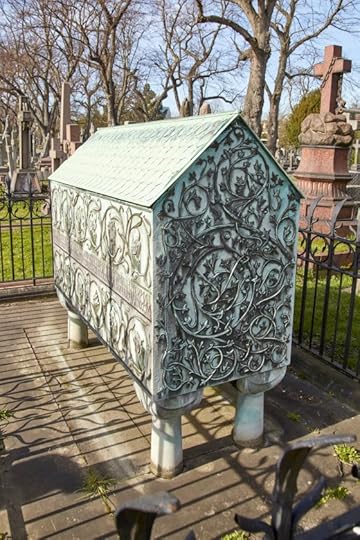
Source: image credit to Greywolf Royal Park.org.au
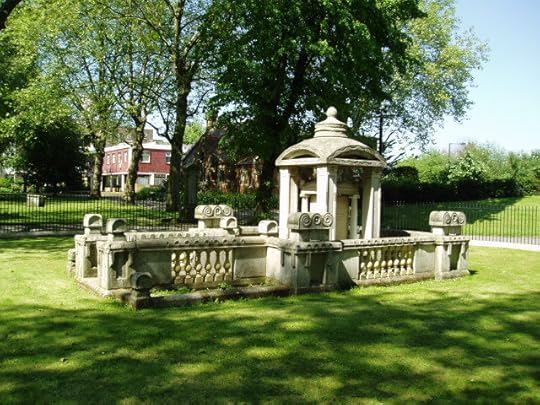
Source: Image credit Björn Haglund (Find A Grave)
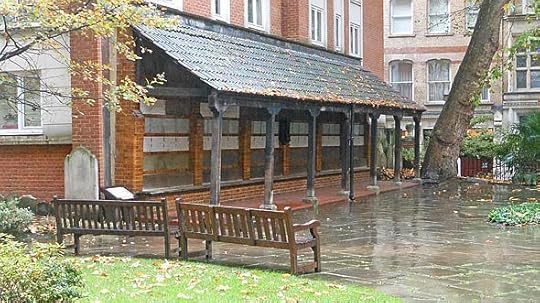
Source: London City Guide
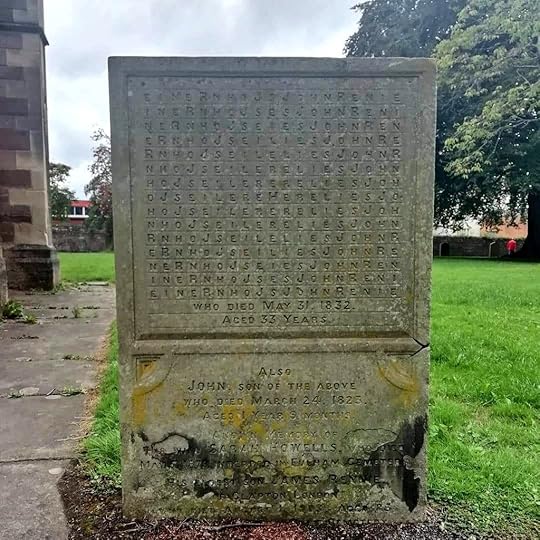
Source: Image Credit: Louvain Rees